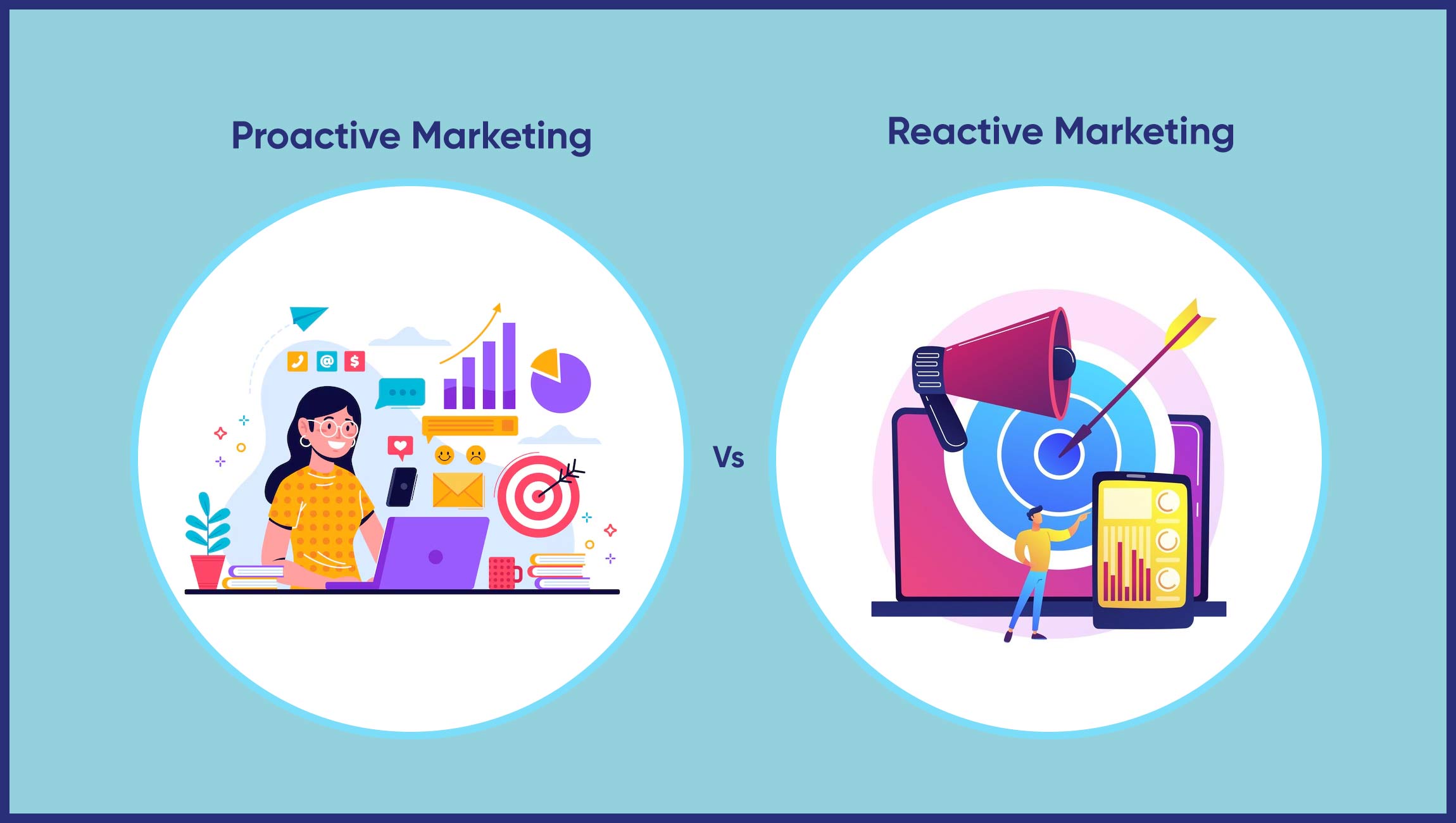Marketers approach marketing in various ways. Some follow proactive marketing, while others fall for reactive marketing tactics. But do you know that a successful marketer always knows to strike a balance between the two? Essentially, it is about the right time to use proactive and reactive marketing practices.
Both of these marketing practices carry their pros and cons, and we are here to give you a detailed overview of it:
Proactive Marketing
You are a proactive marketer when you read future trends, anticipate customer needs, and observe the challenges that are going to come in the time ahead. With the help of your people, products, and processes, you devise strategies that will help you deal with these challenges and keep your customers happy and content.
That said, proactive marketing focuses on long-term goals, constant market research, and innovation to get a competitive edge. Businesses following a proactive marketing approach become business leaders, and others try to follow in their footsteps.
Reactive Marketing
You are a reactive marketer when you make changes to your marketing strategies in response to changing market dynamics. Reactive marketing works in the short term and follows a tactical approach. It helps you address the immediate needs of your customers and become opportunistic.
Reactive marketing demands a flexible yet agile mindset. Marketers must be quick to take decisions so they can capitalise on events or trends.
Difference Between Proactive and Reactive Marketing
| Points of Difference | Proactive Marketing | Reactive Marketing |
| Definition | It anticipates future needs of the customers and trends to create strategic plans in Advance. | It responds to the current market condition, changes, customer feedback, and competition. |
| Focus | It focuses on continuous market research, innovation, and long-term goals. | It focuses on short-term tactics, addressing current issues, and capitalizing on unexpected opportunities. |
| Timing | It is executed ahead of time. | It is implemented in response to the current events and market conditions. |
| Approach | It is preventive, forward-thinking, and strategic | It is adaptive, agile, and responsive. |
| Resource Allocation | Resources are allocated on the basis of predicted trends and long-term plans | Here, the resources are allocated quickly so that immediate needs are addressed. |
| Advantages | It helps you maintain a competitive edge, drive long-term growth, and prevents issues to come in the future. | It provides you with flexibility and quickly adapts to market changes. |
Leveraging proactive and reactive marketing strategies for your business
With the help of the above information, we understood that proactive and reactive marketing are two different approaches. Proactive marketing is anticipating and planning for the future and staying ahead of the competition to meet future demands. Examples of proactive marketing include market research, product development, and branding.
Reactive marketing is a response-based approach that revolves around responding to current market trends and changing consumer dynamics. Strategies under reactive marketing include price adjustments, following social trends, promotions, and creative advertising campaigns tailored to steal customers’ attention.
A deep understanding of both strategies can create a more effective long-term approach that will have a positive impact on their overall marketing efforts.
Marketing Technology News: MarTech Interview with Jonathan Rosenberg, CTO and Head of AI @ Five9
Tips to implement proactive marketing:
- Conduct market research: commonly done through consumer surveys, online research, focus groups, and so on. The goal of the research is to understand where your business stands and what it needs to do to stay ahead of the competition.
- Identify new opportunities: Leveraging the data from the research, you can look for patterns and trends that will help you identify opportunities for your business.
- Product development plan: Based on the research, you can create a product development blueprint by outlining milestones, timelines, and resources required.
- Use of advanced technologies: Proactive marketing lets you use the latest technologies so you can engage with your audience more effectively.
- Continuous improvement: Proactive marketing is not a one-time thing but a continuous process. It is essential to keep working on it and repeating the cycle one after the other.
Tips to implement reactive marketing:
- Agility and flexibility: Reactive marketing requires agility, so you can quickly create and launch marketing campaigns to grab the attention of your consumers before your competitor does. Make yourself flexible in adapting to the changing market and consumer dynamics.
- A close eye on the market: If you want to nail your reactive marketing, you should keep a close eye on the market. It includes setting up Google alerts, social media monitoring, and more.
- Use promotions and utilise trends: Offering lucrative deals on your products and services will attract more customers. Utilising the latest trends will increase your brand engagement.
Striking the balance between proactive and reactive marketing
Modern businesses must remain proactive and agile at the same time. Combining both marketing strategies, businesses can capitalise on emerging trends, address consumer needs, and navigate present and future business challenges with ease.
It is time for us to adopt a balanced approach to maintain a competitive edge while nurturing long-lasting customer relationships.
Marketing Technology News: Marketing Automation: How Adoption Trends for Marketing Automation Have Grown Globally






